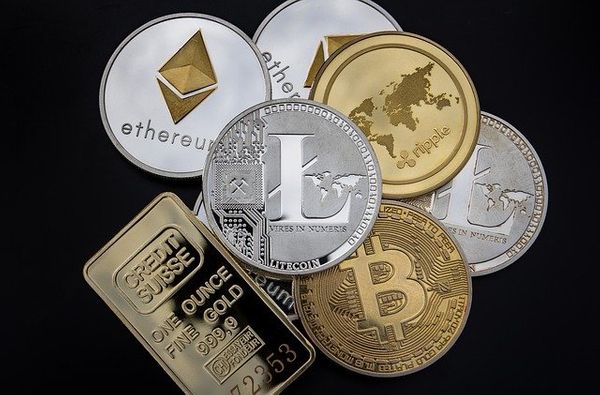One of the most interesting things about investing in stocks is that there’s always “the next big thing” lurking around the corner. While luck can play a part in landing on a stock that will go big, there are some things you can take into account when looking for your next investment.
When Bitcoin got its start in 2010, many people did not take it seriously. Its starting price was $0.0008 a coin. As of April 21, 2021, it is worth $54,999.40 a coin. That is a far cry from its start.
There are many cryptos today and you may wonder what the next revolution in cryptocurrency will be. Keep reading to find out the future crypto revolution and the contenders for the next Bitcoin.
What to Look For
One of the things investors consider before investing is the price of said investment. The lower the cost, the more bang you get for your buck.
However, investors should also look at the function of digital currencies and the supply. A cryptocurrency’s versatility will see it through the inevitable ups and downs of the market and secure its longevity.
Meanwhile, how much of a crypto is available plays a huge role. One of the biggest reasons Bitcoin is worth so much is because there is a limited supply. There will only ever be 21 million bitcoin in circulation.
The more people want it, the higher the price will rise, and its scarcity will compound the rise in its value.
Click here to read more about Bitcoin’s potential
Future Crypto Revolution Trends
There are some things to watch for if you are looking for the next Bitcoin. Here are some of the determining factors below.
A Reputable Team
The most important thing you’ll want to watch for is who is behind a cryptocurrency. Applications and supply are important factors in determining success, but you also want someone reputable at the helm.
Their image and the way they handle the management of the crypto’s platform can impact how well the crypto does.
Decentralized Finance
Decentralized finance is a system where financial systems run on cryptocurrency or blockchain technology. Most, if not all, crypto platforms run on this system.
These systems are not run by an individual or a central organization, cutting out the middle man. This increases the speed and utility of transactions users want to place. Decentralized finance gives users direct control over their money and the freedom to maintain autonomy over what they do with it.
Non Fungible Tokens
Non Fungible Tokens (NFTs) are digital assets, like art, that people exchange via the internet. NFTs run a wide gamut of what they incorporate – they can be art, baseball cards, music, and so much more. You can also give someone proof of ownership through an NFT for a physical asset.
NFTs have been growing in popularity since 2017. Some crypto platforms allow their users to purchase and sell NFTs using the digital currencies available on these platforms.
Yield Farming
This is an integral part of a decentralized finance network. Through yield farming, users can earn crypto by using crypto they already own. The process is akin to lending money and earning interest on that loan.
However, yield farming lets users get more than just interest. They also have the opportunity to get more crypto coins or even get coins of an entirely different cryptocurrency.
Yield farming locks into the paramount aspect of investing – the art of making money to make money.
The Candidates for Revolution
There are a few crypto candidates for the next Bitcoin. Here are some of them below.
Ethereum
The lynchpin of the Ethereum network is something called smart contracts. Smart contracts allow users to make contracts with each other, without the need for lawyers. Once the conditions of the contract are met, an automatic exchange of Ether (Ethereum’s crypto) takes place.
Ethereum holds the spot as the number two crypto and is set for a bright future. Its blockchain technology runs at a faster rate than Bitcoin’s, which allows for transactions to execute faster.
Litecoin
Litecoin’s decentralized network offers the ability to make low-cost, fast, global payments. Its fast network and a large supply of digital tokens have given it the distinction of “the silver to Bitcoin’s gold”.
Litecoin is a popular crypto with great growth potential, but it hasn’t seen the same trends (yet) that Bitcoin and Ethereum have. However, its technological prowess will allow it to remain a contender in the crypto market.
Ripple
Ripple is an interesting case because the platform is more noteworthy than the cryptocurrency (XRP). Ripple allows users to transfer money with ease across the globe.
Users can move USD, Yen, Bitcoin, Litecoin, and many more. This process is seamless and much faster than Bitcoin. Ripple transactions require less energy and receive confirmation in seconds.
Even though the platform is all the buzz, XRP is the third-highest crypto by market cap. Ripple’s features make XRP a strong contender for investors looking to grow their money.
Tether (USDT)
Tether is one of the most unique cryptos on the market because its value has a “tether” to the US Dollar. Each coin maintains a value of one dollar, which protects it from the price fluctuations that cryptos are known for.
This feature has given it the moniker of a “stablecoin” since its value is static. Instead of finding use as an investment strategy, Tether can be a way to store value. Because of its 1-to-1 ratio, Tether could pave the way for the digitization of the US Dollar. If you’re interested in Tether’s value and want to explore its price in Australian Dollars, check out Tether Price in AUD.
Tell us your views on future crypto revolution, what according to you will be the next Bitcoin?
Also Read: The Risks And Rewards From Using Cryptocurrency As An Inflation Hedge


